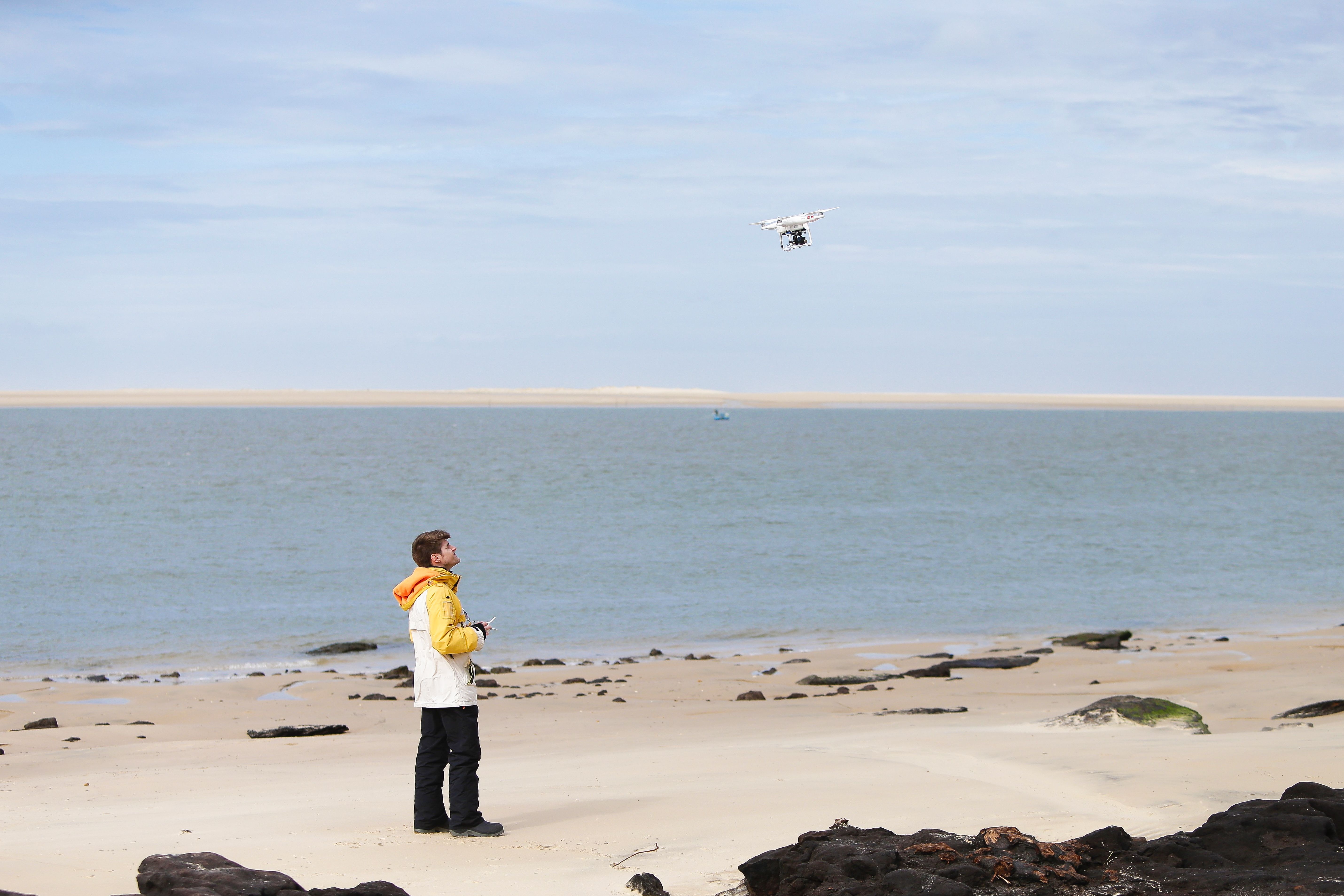Teaching Drones How To Crash Safely

A husband and wife team believe they have the solution to one of the biggest hurdles to drone package delivery.
Most unmanned aerial vehicles aren’t unmanned at all. By law in the U.S., a dedicated pilot must maintain a line of sight to the vehicle in order to ensure safe operation. This setup is untenable for the large-scale rollout of drone fleets, such as those planned by Amazon to handle customer deliveries in urban areas, or for public service missions involving scanning for forest fires, search and rescue operations, or shark surveillance.
Lou Glaab, an aerospace technologist and NASA researcher, and his wife, Trish Glaab, a software engineer, have developed a system that they believe solves the problem. Safe2Ditch is a package of software algorithms and logic that resides within the vehicle either as in a small separate flight computer or an integrated mode in an autopilot. In the event of a mechanical failure, or a drained battery, Safe2Ditch will enable the vehicle to land safely, mitigating the risk of injury to people in urban and suburban areas.
It’s technology that the Glaabs believe will help companies make the case to the U.S. Federal Aviation Administration, which regulates all aspects of civil aviation, that these vehicles can operate autonomously and safely in the vicinity of homes and crowds.
The software was designed specifically for smaller, lower-cost aircraft. It monitors various systems in the drone, and makes decisions to either let it proceed as planned, if no emergency is predicted, or to take control, pick a safe landing site, and execute a landing as gently as possible given the impaired vehicle’s capabilities. The system stores a database of potential ditch sites for safe emergency landings, and is able to choose the ideal site based on range, size, type of terrain, reliability, and time or day constraints. (The team intends later iterations of the software to assess potential landing sites outside of database options, by analyzing the vehicle’s video feed).
“Safe2Ditch was designed to emulate the kind of decision making that a general aviation pilot might have to provide if her aircraft suddenly became non-airworthy and she needed to react and maneuver to protect her life and the life of people on the ground,” says Trish. The software constantly monitors the vehicle’s health, and cross-references this with its mission plan and power needs. When an imminent emergency is detected, the system begins its triage of known best crash sites, evaluating the life and performance of the disabled vehicle against what it takes to fly to each area. If no site is available within the vehicle’s capability, it simply starts looking in the immediate area within the available predicted time-to-crash window.
It’s a much more advanced system than what is currently used in most commercial UAVs, which require a designated "home" point, to which the vehicle will attempt to return in the case of a hardware malfunction or drained battery. Current models are unable to safely ditch if, for example, the remaining battery charge is unable to return the drone to its home point, or if that home point is out of date.
“The current system is reliant on the UAV having been set up correctly,” explains Nicholas Roy, professor of aeronautics at MIT. “So you get these comical stories where the operator has forgotten to change the home point when flying in a new location, and the vehicle attempts to fly a massive distance back to the specified home point.” Depending on the failure, some commercial UAVs currently will hover for a set duration of time, affording the pilot a chance to recover the situation.
By contrast, the Safe2Ditch system uses an onboard camera to detect if there is movement at a potential crash site in order to ascertain if there are people or cars present and either re-route to another site or maneuver to avoid the motion. This feature has proven to be the most challenging to implement for the team, since the camera is vibrating and moving as it tries to detect moving objects on the ground. The pair have partnered with a team from Brigham Young University, which has developed software to help this problem.
The Safe2Ditch system isn’t failsafe yet. It’s currently unable to engage when, for example, the vehicle’s battery suddenly quits, such as when a cable disconnects, or if the autopilot entirely fails—shortcomings that the team is currently working to address via regular capability additions.
Once these remaining technological challenges are solved, Roy believes that Safe2Ditch, or similar systems, could become an FAA-mandated safety standard in UAV manufacturing.
“The FAA has been historically shown to move quickly when the right technology comes along to improve safety,” says Roy. “The bigger stumbling block is finding systems mature enough so that regulators can make it an essential requirement. That’s why the Safe2Ditch program is so exciting.”
Keep Reading
Most Popular
Large language models can do jaw-dropping things. But nobody knows exactly why.
And that's a problem. Figuring it out is one of the biggest scientific puzzles of our time and a crucial step towards controlling more powerful future models.
How scientists traced a mysterious covid case back to six toilets
When wastewater surveillance turns into a hunt for a single infected individual, the ethics get tricky.
The problem with plug-in hybrids? Their drivers.
Plug-in hybrids are often sold as a transition to EVs, but new data from Europe shows we’re still underestimating the emissions they produce.
Stay connected
Get the latest updates from
MIT Technology Review
Discover special offers, top stories, upcoming events, and more.